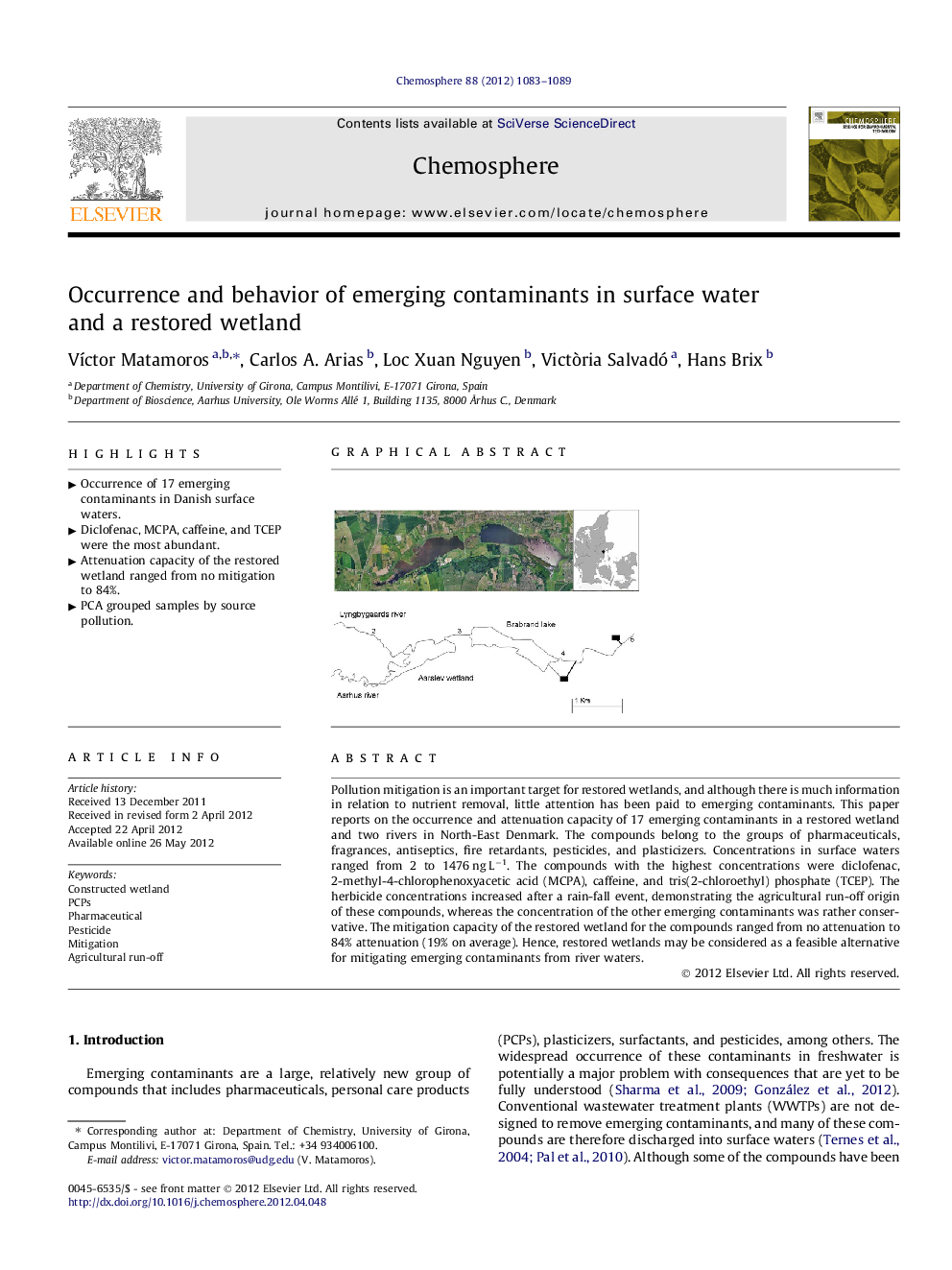| Article ID | Journal | Published Year | Pages | File Type |
|---|---|---|---|---|
| 4409624 | Chemosphere | 2012 | 7 Pages |
Pollution mitigation is an important target for restored wetlands, and although there is much information in relation to nutrient removal, little attention has been paid to emerging contaminants. This paper reports on the occurrence and attenuation capacity of 17 emerging contaminants in a restored wetland and two rivers in North-East Denmark. The compounds belong to the groups of pharmaceuticals, fragrances, antiseptics, fire retardants, pesticides, and plasticizers. Concentrations in surface waters ranged from 2 to 1476 ng L−1. The compounds with the highest concentrations were diclofenac, 2-methyl-4-chlorophenoxyacetic acid (MCPA), caffeine, and tris(2-chloroethyl) phosphate (TCEP). The herbicide concentrations increased after a rain-fall event, demonstrating the agricultural run-off origin of these compounds, whereas the concentration of the other emerging contaminants was rather conservative. The mitigation capacity of the restored wetland for the compounds ranged from no attenuation to 84% attenuation (19% on average). Hence, restored wetlands may be considered as a feasible alternative for mitigating emerging contaminants from river waters.
Graphical abstractFigure optionsDownload full-size imageDownload as PowerPoint slideHighlights► Occurrence of 17 emerging contaminants in Danish surface waters. ► Diclofenac, MCPA, caffeine, and TCEP were the most abundant. ► Attenuation capacity of the restored wetland ranged from no mitigation to 84%. ► PCA grouped samples by source pollution.
